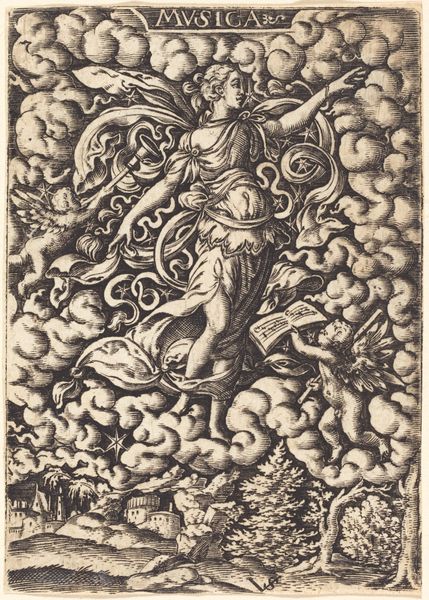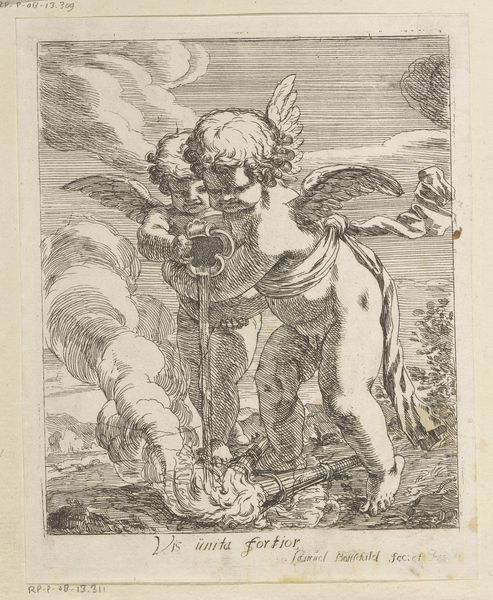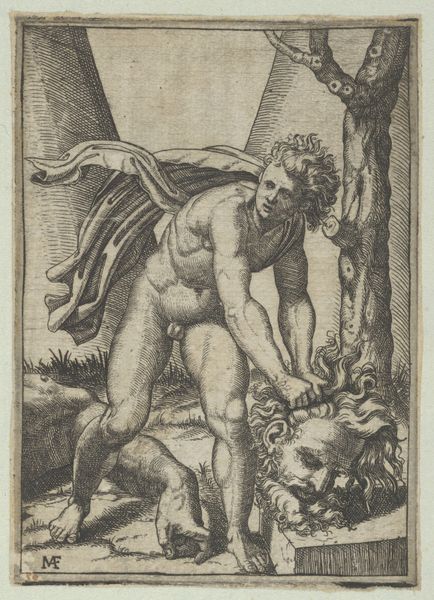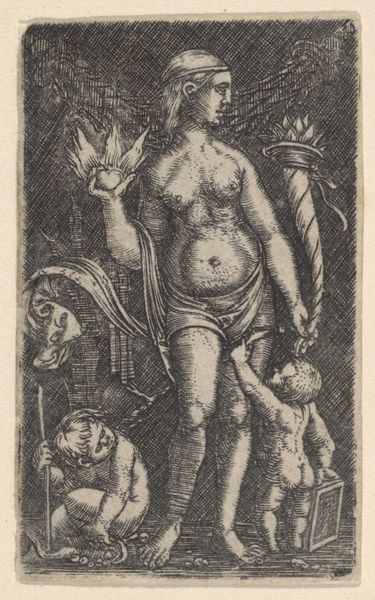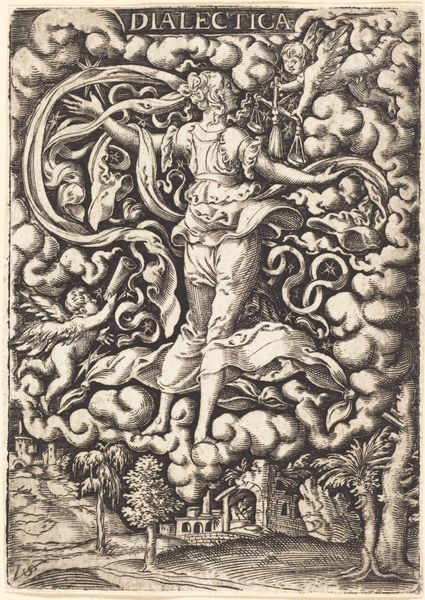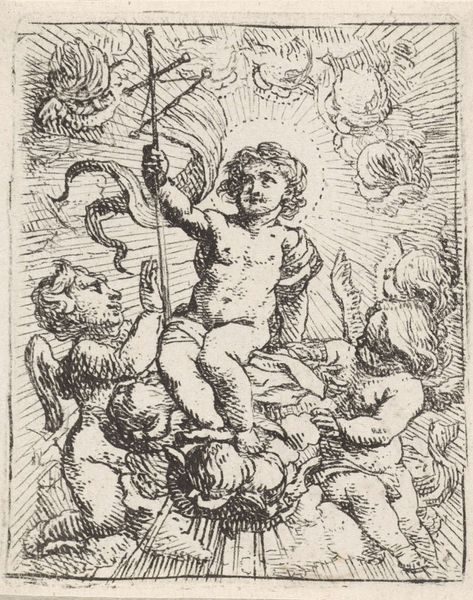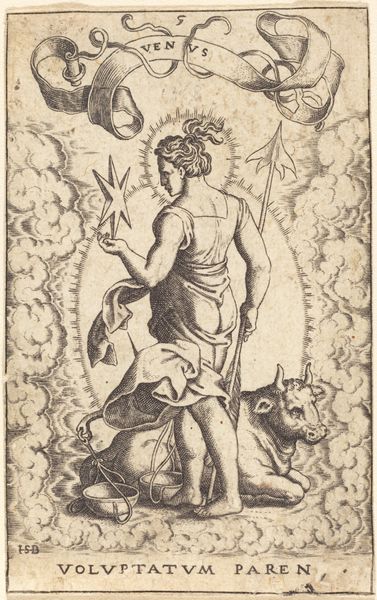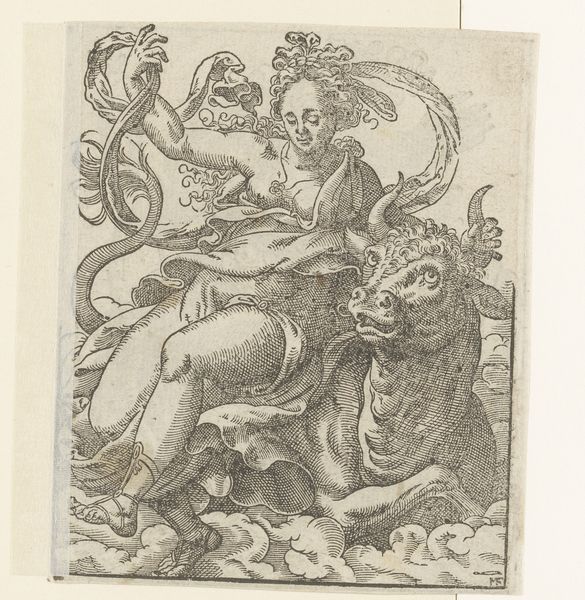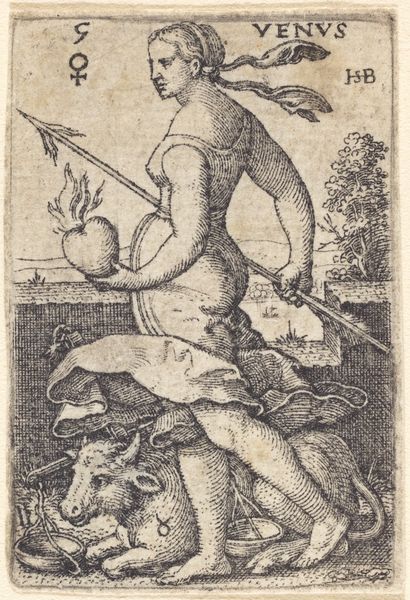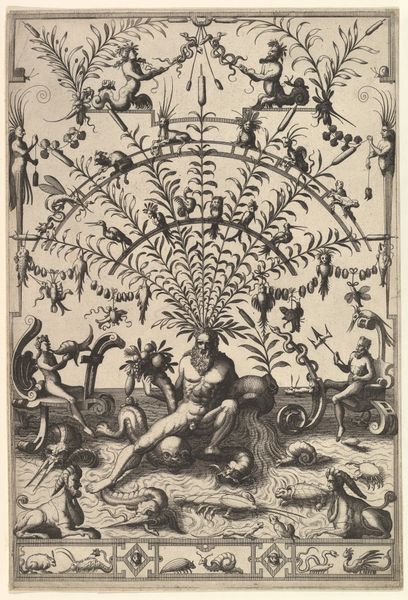
print, engraving
#
allegory
#
pen drawing
# print
#
figuration
#
history-painting
#
northern-renaissance
#
engraving
Copyright: National Gallery of Art: CC0 1.0
Curator: This is "Mars," an engraving likely from the mid-16th century and attributed to Sebald Beham, a prominent figure in the German Renaissance. What are your initial impressions? Editor: I'm struck by the almost frantic energy conveyed through the intricate linework. It's a densely packed image, verging on overwhelming. And that stark contrast in black and white gives it an almost feverish quality. Curator: Indeed. Notice how Beham employs cross-hatching to define form and create depth. The figure of Mars, turned away from us, dominates the composition. A swirling cloudscape surrounds him. How do you interpret this treatment of space? Editor: Well, it's interesting that Mars has his back to us; his material power seems dependent on his averted gaze, but in conjunction with those swirls, the texture seems so rough, like something built rather than depicted, emphasizing the laborious printmaking process. I'm wondering about the accessibility of these images; it makes one think about whose hands touched them, who owned them, how they circulated in early modern society. Curator: A crucial point. These prints democratized art. Now, observe the figure's attributes: the sword, the torch, and the symbols at his feet – a crab and a ram. How might they contribute to the allegorical meaning? Editor: Given Mars’s patronage of the warrior, it reads traditionally enough; that sword represents military strength, while the torch alludes to the destructive force of war. Then we look at how printmakers utilized acids to etch lines, thinking about its effect on metal to create these images which underscores the whole art of destruction to make an image of war itself. It suggests these aren't just artistic representations but indexes of a material process. Curator: Precisely. Beham cleverly synthesizes classical allegory with contemporary printmaking techniques, creating an object ripe with cultural and material meaning. Editor: This artwork offers much to consider when examining labor in printmaking and its dissemination during that period. It's great.
Comments
No comments
Be the first to comment and join the conversation on the ultimate creative platform.
